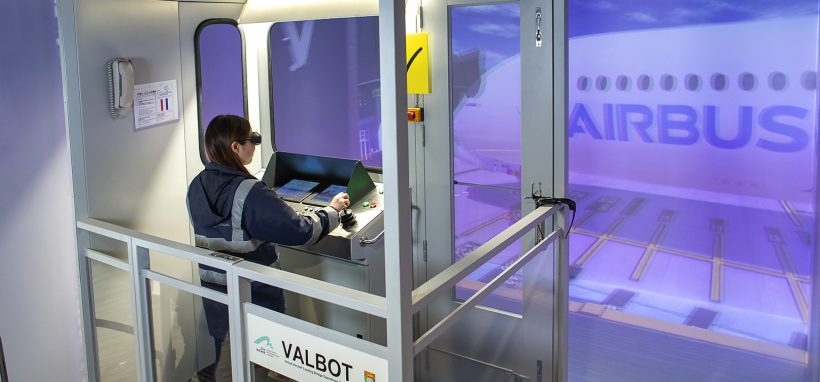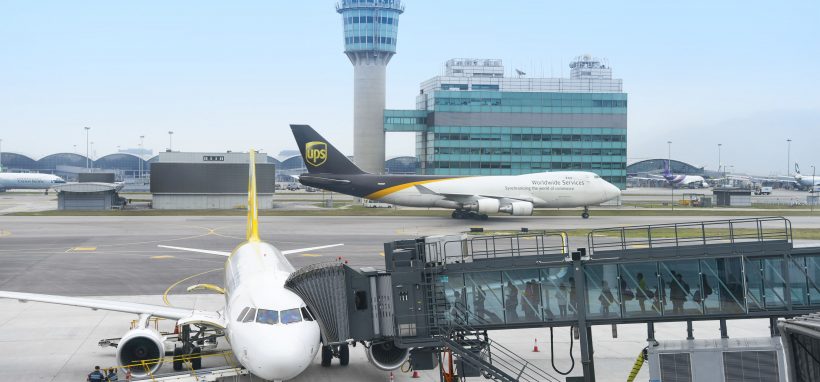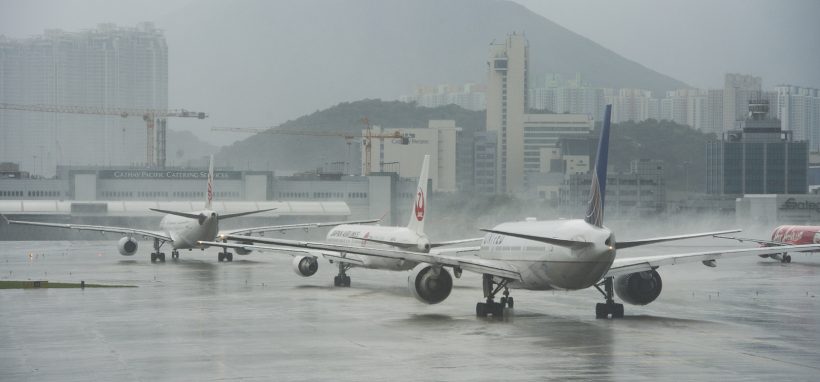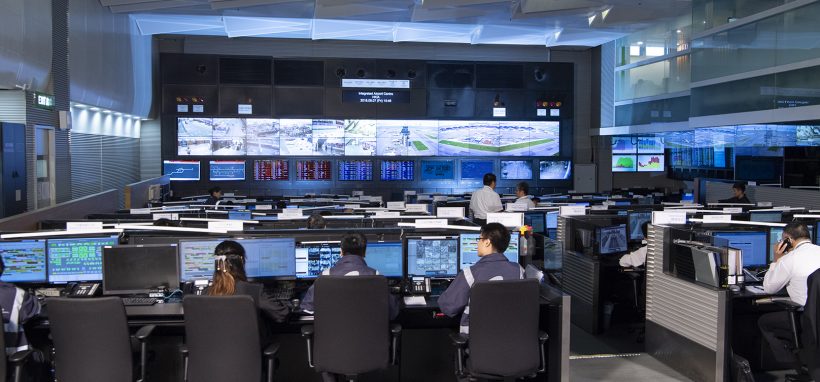Safety, Security and Contingency Planning
Ensuring the safety of the thousands of airport staff and the millions of passengers travelling through our airport every year remains our top priority. Moreover, we also need to be well prepared to predict, prevent and, where necessary, respond swiftly to all potential disruptions and crises that may affect the smooth operation of HKIA.
Ensuring the safety of our passengers, staff and airport operations is always our first priority. With the support of our business partners, we operate a safety management system, which provides a robust framework of safety processes, and work closely with our employees and the airport community to cultivate a ‘safety-first’ culture. We are also applying new preventive technologies to further strengthen the safety of HKIA.
HKIA achieved a record low injury rate of 3.25 injuries per million passengers in 2017/18 through the continuous collaboration of the airport community.
Airport Composite Safety Index1
1 Airport Composite Safety Index is a safety performance indicator that measures the number of injuries arising from passengers and staff, with respect to the number of passengers.
2 Total number of passengers includes originating, terminating, transfer and transit passengers. Transfer and transit passengers are counted twice. The number of passengers broken down by passengers on international and domestic flights is not relevant for AAHK as all passengers are classified as international. Origin-and-destination and transfer and transit data is not reported as it is considered commercially sensitive.
Key initiatives
Safety management system
- Our corporate safety policy and safety management system manual were reviewed and updated.
- An online hazard reporting platform was launched to encourage reporting of related hazards.
AAHK employees
- A corporate-wide safety campaign was organised covering topics such as occupational health and safety, preventing slips and trips as well as hazard reporting.
Airport community
- A series of Airport Safety Awareness Training was organised for AAHK contractors and landside tenants.
- The annual Airfield and Baggage Hall Safety Campaign was held to enhance the safety awareness of staff working on the ramp and in the baggage hall.
- An overhaul of the baggage hall to enhance workplace safety, which included modifying and building new plinths, replacing existing and installing new railings, and reconfiguring road marks, commenced in Q4 2017/18.
- A Virtual Aircraft Loading Bridge Operation training facility was installed.
Passengers
- 30 Airport Safety Ambassadors were deployed during busy travel periods throughout the year to promote safety and remind passengers of the proper use of airport facilities.
- Trials were conducted on the usage of new full-body scanners that use advanced imaging technology to enhance the security screening of passengers at Terminal 2 and the Midfield Concourse. The scanner is designed to detect items carried on a person or concealed underneath a person’s clothing. We are now evaluating the trial results, which will help determine the future deployment of full-body scanners at HKIA.
- In conjunction with the Immigration Department, we launched 10 e-Security Gates, which use facial recognition technology to automate the travel document inspection usually performed by an immigration officer. We are now examining the use of biometric technologies to facilitate passenger flow and enhance security in other parts of the airport.
Q&A with Michelle Ho, Manager, Standards & Service Delivery
What is this new Virtual Aircraft Loading Bridge Operation training facility for and what are its advantages?
“For most of us, we learn more effectively by having hands-on experience, so simulations that let us experience scenarios as close to the real environment as possible make learning a practical experience. Working closely with the Department of Industrial and Manufacturing Systems Engineering of the University of Hong Kong, we leveraged virtual reality (VR) technology and created an authentic virtual environment providing an immersive and high-fidelity 3D experience for the training of aircraft loading bridge operation at HKIA.
Prior to the introduction of VR training in 2018, training for operators took place at the aircraft loading bridges at HKIA. This training generally took place during off-peak periods to minimise the disruption to the normal operation of aircraft loading bridges. With the launch of our VR training facility, operators are able to experience different operating conditions in a safe environment under a more flexible training schedule. At the same time, aircraft loading bridges are freed up for operational use.”
How did you collaborate with other stakeholders to successfully implement the initiative?
“The operation of aircraft loading bridges is conducted by our ramp handling operators (RHOs) at HKIA. We engaged with the RHOs during the early planning stage to gather their support for embedding VR training into their training programmes. Concerns from the RHOs, such as allocation of training resources, cost, and planning, were discussed early on so that the VR training programme could be tailored to the needs of each individual RHO. Since September 2018, VR technology has been incorporated into aircraft loading bridge training programmes of all three RHOs.”
How is VR training helping to enhance overall safety?
“Workplace training accidents unfortunately occur from time to time and in some cases, they may even be fatal or cause damage to equipment. As trainees are prone to making mistakes, they need a safe environment to practice their skills until they are confident in them and VR is an ideal platform providing that. By helping them to visualise a variety of scenarios and allowing them to practice in a virtual 3D environment, they can improve their skills, build up their experience, and start the job with greater confidence. This enhances the overall safety of aircraft loading bridge operation.”
What were you most proud of for this project?
“I am most proud of HKIA being the first airport to introduce VR training for aircraft loading bridge operation. As the airport operator, AAHK adopts a leadership approach to improving safety and enhancing efficiency. This is a solid demonstration of the collaborative approach at AAHK with our airport business partners to drive continued excellence at HKIA.”
Given the range of potential disruptions and crises that may affect the operations of HKIA, we have put in place systems and processes to predict, identify, manage and minimise the associated risks. With a view to strengthening the operational resilience of HKIA, we must ensure that all AAHK employees and business partners are aware of the systems and procedures, and take appropriate action in the event of disruption or crisis.
Q&A with Albert Ho, Assistant General Manager, Airfield
How was HKIA operations affected during recent typhoons?
“Typhoons are commonly observed in Hong Kong through the summer and fall months. The airport can be affected by strong winds, heavy rain, low visibility, and other weather-related conditions, which may impact airport operations. Under these circumstances, our priority at HKIA is to maintain the smooth running of the airport and handle flights affected by the storm safely and efficiently. When weather conditions improve, we strive to resume normal operations as soon as possible with the support of our business partners.
In the past two years, Hong Kong has been affected by increasingly powerful storms since records began in 1946. Last year [2017], Typhoon Hato, packing winds up to 185km/h at its peak intensity, forced the cancellation of 480 flights at HKIA. This year [2018], around 900 flights were cancelled under Typhoon Mangkhut, a more intense storm that felled 46,000 urban trees. On both occasions, our contingency plans were put to the test to weather the storms. The two runways operated overnight to help clear the backlog of passengers and flights to allow the airport to resume normal operations within one day after the typhoons cleared Hong Kong.”
How did you coordinate and collaborate with other departments and airport business partners to ensure a safe operation and prompt recovery after the storm?
“The Integrated Airport Centre (IAC) at HKIA is the nerve centre of the airport. During the passage of a typhoon, the Airport Emergency Centre, located inside the IAC, is activated to facilitate close communications and effective coordination between business partners, including the Hong Kong Observatory, Civil Aviation Department, Immigration Department, Customs and Excise Department, airlines, ground service handlers, airport catering outlets and public transportation operators.
During post-typhoon recovery, enabling effective information sharing is critical to ensure we maximise the airport’s efficiency and capacity utilisation. In operation since 2015/16, the Airport Collaborative Decision Making (A-CDM) system was used as an information-sharing platform between AAHK and our business partners to exchange data in real-time and improve flight punctuality and reduce taxiing time. The Flight Rescheduling Control System was also activated to provide airlines with reassigned flight slots to help clear the backlog of passengers and flights in an orderly manner.”
Are there any special moments that you would like to share?
“AAHK colleagues’ steadfast demonstration of a “can-do” spirit is what makes it so special to work here. As soon as a problem is realised, every one pulls together quickly to tackle the situation. I was truly impressed with our team’s handling in the aftermath of Typhoon Hato. The apron passenger vehicle lounge at the Midfield Concourse suffered some damage that affected operations related to boarding. AAHK teams swiftly came together to devise a contingency plan in consultation with other airport stakeholders under significant time pressure to resume normal operations as soon as possible.”
Key initiatives
- Business continuity – A video on airport business continuity procedures and plans was produced and is a prerequisite for renewing staff airport permits from Q3 2017/18.
- Land transport contingency – No-Land-Link field exercise was conducted in November 2017 to practice and review the passenger ferry procedures in the event of closure of road and rail links to and from HKIA.
- Typhoon readiness – A multi-scenario typhoon readiness exercise was carried out in March 2018, gathering various airport community stakeholders to familiarise them with weather disruption handling procedures.
- Pandemic preparedness – Four sessions of quarantine and pandemic preparedness were held in March 2018 to familiarise the airport community with the handling procedures for suspected infectious disease onboard an inbound aircraft.






